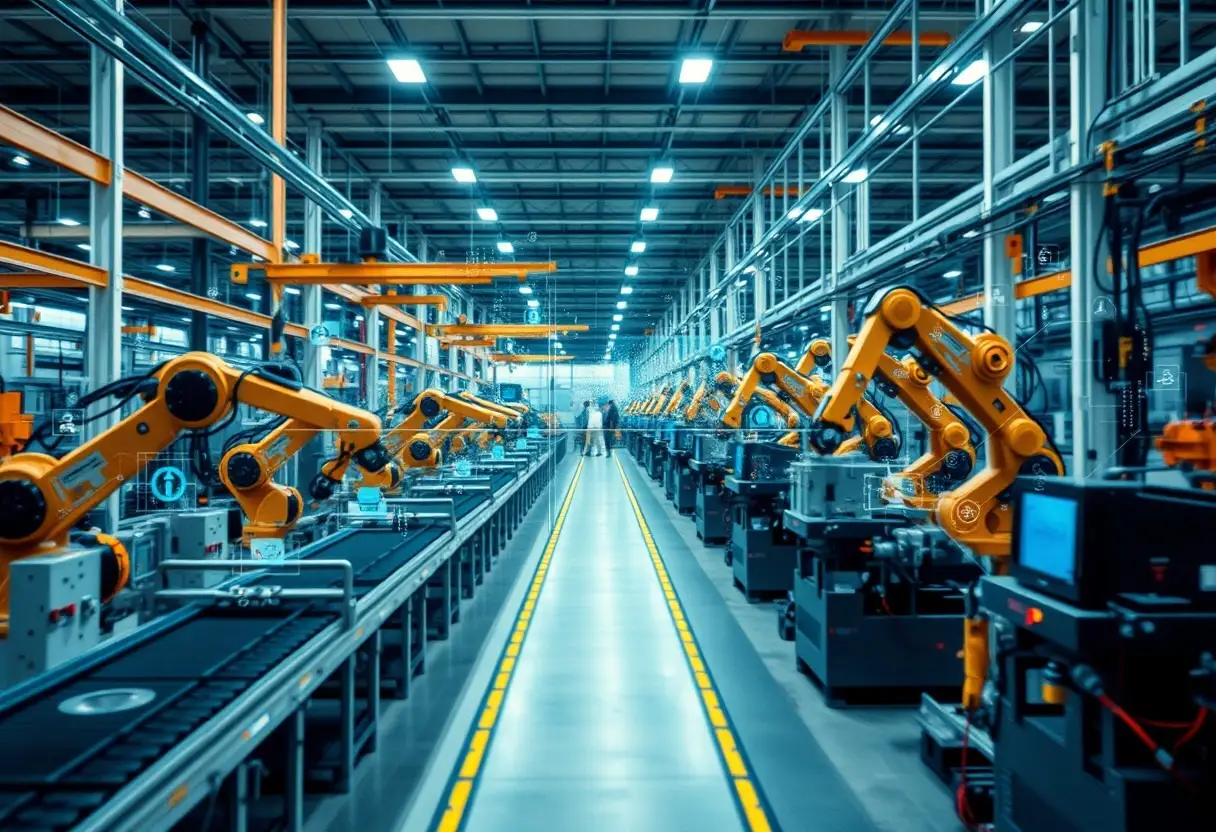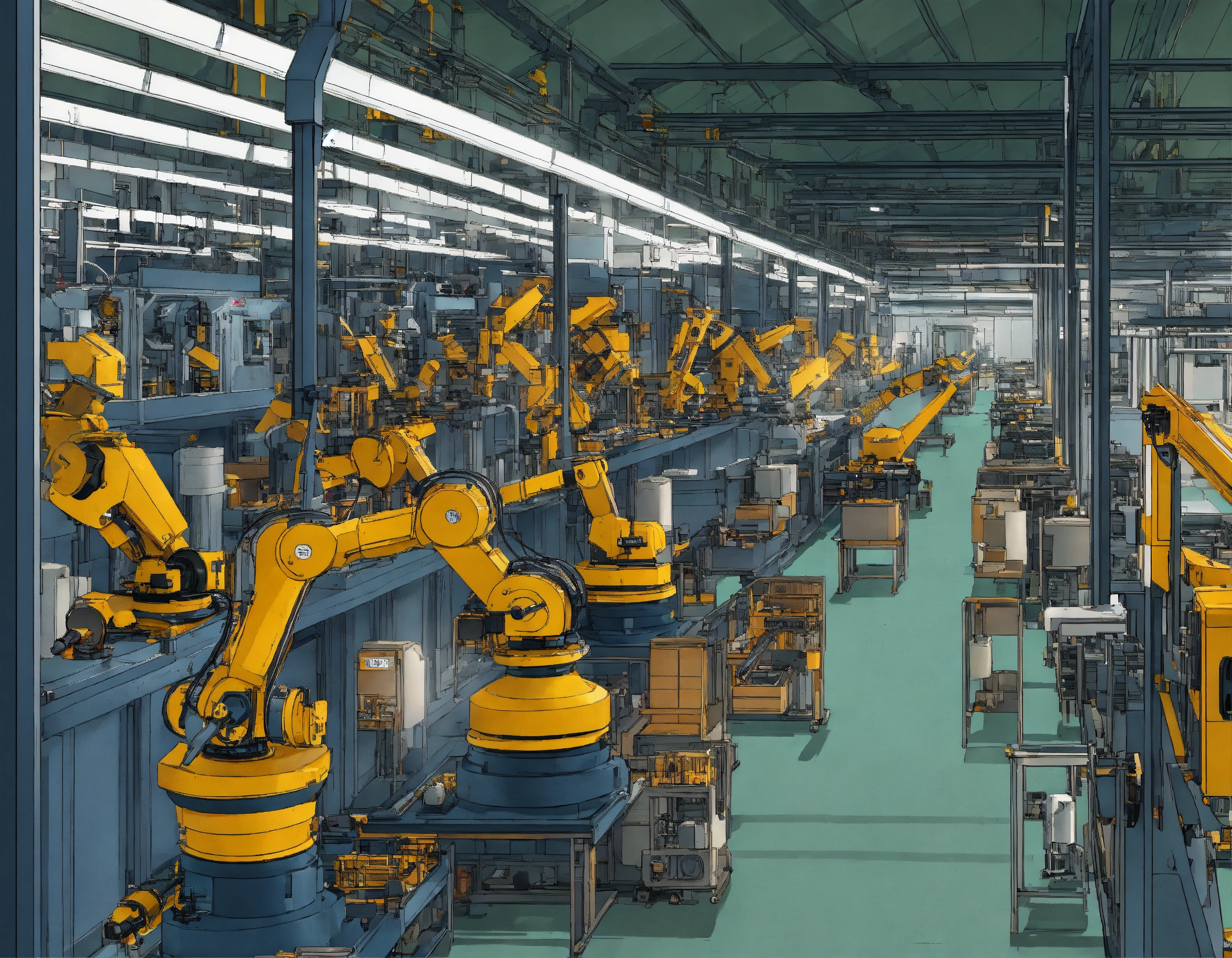You may not realize it, but M2M (Machine-to-Machine) communication is revolutionizing the way smart factories operate. This technology enables seamless data exchange between devices, leading to enhanced efficiency, reduced operational costs, and improved decision-making. By understanding the significance of M2M communication, you will appreciate how it integrates into the broader concept of Industry 4.0, transforming traditional manufacturing processes into adaptive, intelligent systems. Dive into this post to discover how M2M communication serves as the backbone of these innovative factories, paving the way for a smarter industrial future.

Understanding M2M Communication
While exploring smart factories, you may come across the term M2M communication, which plays a crucial role in enhancing operational efficiency. M2M, or Machine-to-Machine communication, refers to the automated exchange of data between machines without human intervention. By enabling devices to communicate independently, M2M facilitates real-time monitoring, control, and management of industrial applications, paving the way for smarter manufacturing processes.
Definition of M2M Communication
For you to fully grasp M2M communication, it’s vital to understand that it involves direct communication between devices through wired or wireless networks. This system ensures that machinery, sensors, and equipment work in harmony to share information and improve decision-making processes, significantly enhancing productivity in various industries.
Key Technologies Enabling M2M
Communication in M2M environments is made possible by several key technologies such as cellular networks, RFID, and satellite communication. These technologies form the foundation for seamless data exchange and remote device management. By leveraging advancements in connectivity and data processing, M2M systems enable efficient workflows and real-time analytics, driving innovation in smart factories.
To understand the significance of these technologies, you should recognize that they not only enable machine communication but also provide scalability and flexibility. For instance, cellular networks offer extensive coverage that allows devices to remain connected even in remote locations. Likewise, RFID technology facilitates accurate tracking of assets and inventory, minimizing errors and streamlining operations. Together, these technologies form an integral part of M2M communication, making it vital for the success of smart factories.
Differences Between M2M and IoT
Technologies commonly blend the concepts of M2M and IoT, but they have distinct purposes. M2M specifically focuses on communication between machines, whereas IoT encompasses a broader range of interconnected devices, including sensors and applications that may involve human interaction. Understanding their differences can help you appreciate the specific role of M2M in the smart factory ecosystem.
Plus, it is vital for you to know that while both M2M and IoT aim to enhance efficiency and connectivity, IoT extends its reach beyond just machines to include a vast array of devices and systems. IoT solutions often incorporate data analytics, user interfaces, and cloud computing, providing a more comprehensive approach to connectivity. In contrast, M2M remains focused primarily on enhancing the performance of machines through seamless communication, crucial for optimizing manufacturing processes in smart factories.
The Role of M2M in Smart Factories
There’s no denying that M2M communication plays a vital role in the development and operation of smart factories. By enabling devices to communicate with each other autonomously, M2M technology optimizes workflows and streamlines processes, ensuring that manufacturing ecosystems are more resilient and adaptive than ever before.
Enhancing Operational Efficiency
Role of M2M in enhancing operational efficiency cannot be overstated. By facilitating seamless communication between machines, production lines, and human operators, M2M systems help you reduce downtime and minimize errors, leading to smoother operations and increased productivity.
Real-Time Data Monitoring and Analytics
The advent of M2M technology has revolutionized real-time data monitoring and analytics within smart factories. With the power to collect and analyze data continuously, you can gain invaluable insights into your production processes, enabling data-driven decision-making that enhances overall performance.
Factories equipped with M2M systems can track every aspect of production in real-time, from machine performance to inventory levels. This instant access to critical data allows you to identify trends, detect anomalies quickly, and implement corrective actions before minor issues escalate into major disruptions, ultimately safeguarding operational continuity.
Predictive Maintenance Capabilities
For many manufacturers, predictive maintenance capabilities powered by M2M communication have emerged as a game changer. By predicting equipment failures before they happen, you can schedule maintenance proactively, thereby reducing unexpected downtime and optimizing your maintenance resources.
This proactive approach not only enhances the lifespan of your machinery but also significantly cuts costs associated with emergency repairs and production halts. With accurate predictions based on real-time data, you can plan your maintenance activities with precision, ensuring that your operations remain efficient and your production schedules on track.
Challenges in Implementing M2M Communication
All industries face challenges when implementing Machine-to-Machine (M2M) communication, particularly in smart factories. To leverage the full potential of this technology, you must overcome hurdles related to security, interoperability, and scalability.
Security Concerns
One major challenge you encounter is ensuring the security of M2M communication. With multiple devices connected, the risk of cyberattack increases significantly, potentially compromising sensitive data and operations.
Interoperability Issues
Security concerns also extend to interoperability issues, as disparate systems need to communicate effectively. You’ll need to integrate various devices and protocols, which can be complicated if they do not speak the same language.
Plus, achieving seamless integration is key to maximizing your operational efficiency. When devices from different manufacturers don’t adhere to common standards, you risk creating silos within your manufacturing processes. This lack of interoperability can lead to delays and increased costs, hindering the overall performance of your smart factory.
Scalability Challenges
Issues surrounding scalability arise when trying to expand your M2M infrastructures. As your factory grows, so too does the complexity of managing numerous connected devices and data streams.
To successfully scale your M2M communications, it’s crucial to adopt flexible and robust solutions. You must ensure that your systems can accommodate increasing device counts and data flow without compromising performance or reliability. Failing to address scalability challenges early on may lead to operational bottlenecks, ultimately affecting your productivity and bottom line.
Future Trends in M2M Communication for Smart
Manufacturing
Now, as industries evolve, the future of M2M communication in smart manufacturing is poised for transformative growth. Understanding these trends can empower you to leverage advanced technologies for operational excellence.
Advancements in 5G Technology
An increasing shift towards 5G technology is set to radically enhance your M2M communication capabilities. With higher data speeds and reduced latency, you can expect seamless connectivity for real-time data exchange between machines, improving efficiency and response times in your manufacturing processes.
Integration with Artificial Intelligence
The integration of artificial intelligence (AI) into M2M communication systems will revolutionize smart manufacturing. By incorporating AI, your systems can analyze vast datasets generated by machines, leading to predictive maintenance, improved decision-making, and enhanced automation.
For instance, AI algorithms can identify patterns in machine performance and predict failures before they occur. This proactive approach not only minimizes downtime but also reduces costs associated with unexpected repairs. By utilizing AI insights, you can optimize production schedules, enabling your manufacturing processes to be more agile and responsive to market demands.
The Rise of Edge Computing
The rise of edge computing complements M2M communication by processing data closer to the source. This minimizes latency and bandwidth constraints, which ultimately enhances your manufacturing operations.
With edge computing, you can take advantage of real-time data analytics at the device level. This means quicker responses to operational changes and more efficient resource management. As a result, your smart factory can operate with greater autonomy and agility, utilizing insights derived directly from machine data to make informed decisions on-the-fly.
Conclusion
Upon reflecting on the significance of M2M communication, you can appreciate its vital role as the backbone of smart factories. By seamlessly facilitating data exchange between machines, M2M communication enhances operational efficiency, reduces downtime, and enables real-time decision-making. As you embrace this transformative technology within your own operations, you position yourself to unlock new levels of productivity and innovation, ensuring that your business remains competitive in an increasingly automated world.





